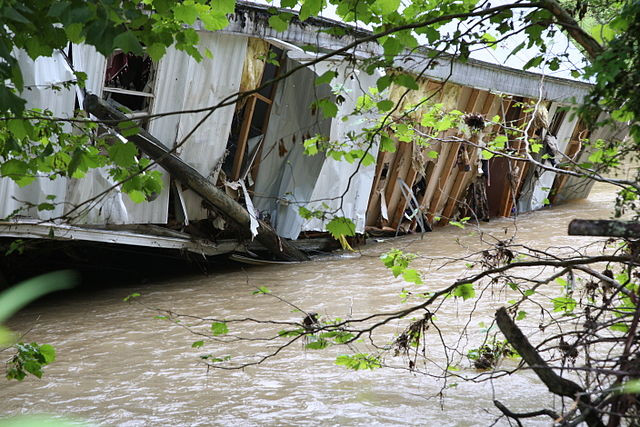At least 13 people have died as severe flooding swept through multiple states over the weekend, with Kentucky bearing the brunt of the devastation. Rising water levels from torrential rains have displaced residents, shut down roads, and prompted widespread rescue efforts, as emergency crews scramble to respond to the crisis.
Kentucky Governor Andy Beshear confirmed Monday that 11 fatalities occurred in his state alone, while West Virginia and Georgia each reported one death. "There are still people that are in harm's way," Beshear said during a news conference, adding that ongoing rescue operations remain a priority. "There are a couple rivers that haven't crested yet, and that's where the emergency operations are focused-especially in Martin County, where we may have 100-plus people we need to move to a safer place."
More than 1,000 individuals in Kentucky have been rescued so far, according to Beshear. The Kentucky National Guard and State Police have been deployed to assist in evacuations, while first responders have gone "door to door" in flooded areas to account for residents. Beshear noted that more than 340 roads have been closed due to flooding, possibly a record-high number for the state.
The National Weather Service (NWS) warned that river levels in parts of Kentucky, West Virginia, and Virginia are still rising and could lead to additional flooding. "Widespread flooding of roads continues across much of the region," the NWS office in Paducah, Kentucky, said in a statement. "Stream and river levels will continue to rise over the next few days in some areas, and this could cause new flooding to develop."
Beshear declared a state of emergency on Friday in anticipation of the storm and later thanked former President Donald Trump for approving a federal disaster declaration, which will allow federal funds to support search and rescue efforts in affected areas.
The impact extended beyond Kentucky, as heavy rainfall and flash floods affected Tennessee, West Virginia, Virginia, and Indiana. In Tennessee's Obion County, a levee breach on Sunday led to mandatory evacuations. "Rising water, no electricity, and freezing temperatures are creating a life-threatening situation," Obion County Mayor Steve Carr said. More than 200 residents were rescued from rapidly rising waters along the Obion River, local officials reported.
In Virginia's Buchanan County, mudslides blocked key roads, further complicating emergency response efforts. West Virginia Governor Patrick Morrisey confirmed that 13 counties in the state are under a state of emergency, with several communities experiencing extreme flooding. "Significant levels of flooding" have resulted in multiple missing persons reports, Morrisey said during a briefing Monday.
The winter storm system, named Winter Storm Jett by the Weather Channel, also brought powerful winds and heavy snowfall to parts of the Great Lakes and Northeast. In Atlanta, one person died Sunday when a tree collapsed onto a home during a severe thunderstorm, according to Atlanta Fire Rescue Captain Scott Powell. Another death was reported in Philadelphia after a tree fell on a vehicle amid high winds.
Power outages spread across the South, mid-Atlantic, and Northeast. More than 500,000 customers lost power at the height of the storm, and as of Monday morning, 300,000 remained without electricity, according to PowerOutage.us. West Virginia and Pennsylvania were among the hardest-hit states, each reporting over 70,000 outages.
As Arctic air moves in behind the storm, dangerously cold temperatures are expected to exacerbate conditions. "Life-threatening cold will grip nearly the entire central U.S. starting Tuesday," the NWS warned. Wind chills could plummet to 60 degrees below zero in parts of the Northern Plains, while sub-freezing temperatures could reach as far south as Texas and Tennessee.






